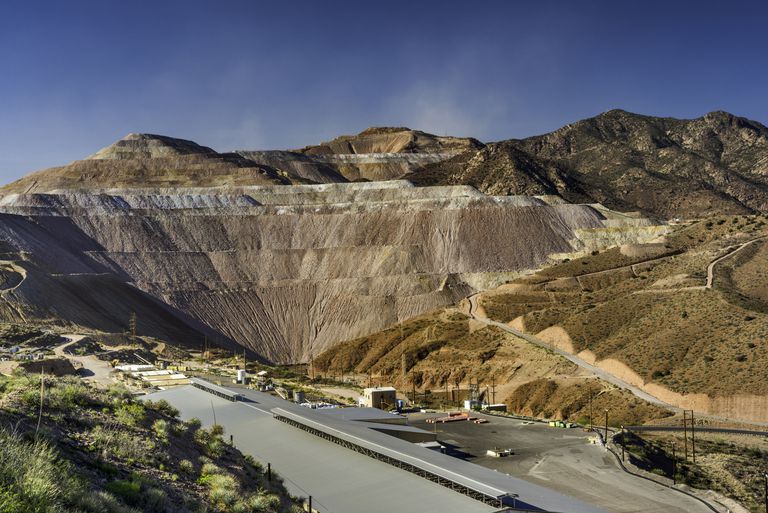Zombie Mines

This is an excellent story about a serious environmental problem and the ridiculous lack of meaningful corporate oversight in the United States. Mining is incredibly environmentally destructive and mining companies are often owned by horrible people who won’t spend one cent to ensure the people who live these mines don’t get poisoned. Mines routinely close because the ore runs out or because prices for it have dropped so far that it’s not worth running. But if the mines actually close, then the companies are responsible for cleaning them up. So instead, operations are just suspended indefinitely, by which we mean decades, during which the company can do absolutely nothing to ensure that waterways, land, and people aren’t poisoned.
Several dozen U.S. uranium mines and more than 150 coal mines sit idle and have not produced for years, according to a Center for Public Integrity investigation. Also idled long-term are facilities such as processing plants, including more than 40 in the coal industry. Mine owners have exploited regulatory loopholes to warehouse their operations, changing the status of their permits on paper while little to no activity happens on the ground.
Mining is a cyclical, boom-and-bust industry, so state and federal laws allow companies to pause work while prices rebound. In the coal industry, where the relevant permit status is usually called “temporary cessation,” this pause rarely has a cap — although regulators attempt to track the number that have been idled for at least three years. In uranium mining, where operations usually wait in “standby,” the limits differ by state — 10 years in Colorado but indefinitely in Utah if “good cause” is shown, for instance.
But many of the mines identified in this investigation have remained “temporarily” paused for decades at a time, despite occasional increases in commodity prices.
And most will likely never produce again.
Uranium and coal are the mines most often idled for long periods, but the investigation also identified about 120 quarries and five Western gold mines paused for three or more years.
Mine owners argue they’re operating within the law, saying higher prices will eventually rescue them. Though government regulators have at times attempted to crack down, their hands are often tied. The U.S. Department of the Interior’s Office of Surface Mining Reclamation and Enforcement, which oversees coal mining, began rewriting weak federal regulations in 1991; faced with industry pushback, it never finished. The agency killed a more recent effort two months after President Donald Trump took office.
Regulators acknowledge that some companies have abused vague laws. “There were applications where a company had applied to get a temporary cessation status, and they were just trying to keep from having to do any further mining or reclamation,” said Davie Ransdell, a retired Kentucky coal mine inspector.
The Four Corners region — where Colorado, Utah, Arizona and New Mexico meet — is home to much of the country’s historical uranium industry, now largely dormant. These sites add to the air and water pollution and low-grade radioactivity that have been linked to local health problems for decades. In Central Appalachia, heavily mined for 150 years, the omnipresent but dying coal industry has sheared off mountaintops and buried streams.
Larry Bush, a retired coal miner and mine inspector who lives in southwestern Virginia near idled operations, is among those fed up with the lack of cleanup.
“They’re destroying everything on Earth and under it,” he said.
Who are these scumbags?
Except for time spent serving in Vietnam, Bush is a lifelong resident of southwest Virginia, where the commonwealth melts into Central Appalachian coal country. Area streams once teemed with minnows, he said. Now they’re choked by silt running off unreclaimed mines.
He grew up hunting squirrels on a hill above his home, but a strip mine owned by West Virginia Gov. Jim Justice and his family now dominates the landscape. Today, Bush lives just up the road, where the hill above that home, too, has been leveled by a Justice operation.
Both mines have sat inactive for years at a time, fouling local waterways. The U.S. Environmental Protection Agency and four states filed legal action in 2016 against Justice and his companies, listing thousands of violations relating to inadequate environmental monitoring and water pollution, including elevated levels of iron and manganese flowing from these mines.
Justice and his family idle more permits than any other U.S. coal mine owners, according to Public Integrity’s analysis of federal data. Miles of ridgeline on the Virginia-Kentucky border lie barren after Justice mines went dormant.
That certainly fits!
What’s more, although the story doesn’t get into this, is that this is a case where the smaller operators are often much worse than the multinational corporations. Consider this the corporate version of the Buddy Garrity Republican, where the small operator is the one full of hate and anger that they are held responsible for everything and resent both the hippies and the big operators. I know a guy who worked for Chevron’s environmental department and for all the horrible things about that company, when they close a mine, they legitimately close it. That’s not because the people who run the company are kindly but because they see the long game and are worried about their corporate brand. These smaller operators though, they will do anything to avoid spending a penny on cleanup. Certainly I have found this in my studies of the timber industry, where the big operators may be bad, but it’s the little guys who are the real despoilers when they can.


